LEDS actually come in all colours.
However, what we as humans call colour is dictated by the fact that the cones in the human eye are only actually sensitive to three primary groups of wavelengths which we call red, green, and blue.


Different LED technologies produce light in a similar but narrower bell curves around a particular wavelength. When we look at them the cones are excited by the wavelengths present and the brain interprets the mixture of excitement as the intermediate colours. The colours that match the cone frequencies are obviously the brightest LEDS.

Notice normal red LEDs are actually off quite a bit from the cone. As such red LEDS are actually a lot brighter than they appear to be.
What that means is that having more LEDs of other colours gives you a limited return since all you need to do is excite the cones in the eye using the appropriate amounts of the three "primary colours" it is sensitive to.
Interestingly, to other sighted animals, colours look quite different. Even you and I will have genetic differences in how we perceive each colour.
EDIT
As others have mentioned in the comments the above description which is widely used is in fact a little too simplified.
Because of the wide bell curve shape of the cone sensitivity the pure RGB excitation method does not work quite as described. For example, notice the "red" cones actually peak out somewhere around yellow-orange. The brain actually interprets red as some excitation on the red cone and no excitation on the green cone. Green on the other hand has equal excitation of blue and red.
In other words, the primary colour model is just not quite that simple.
Adding more colours will in fact produce more detectable hues to the brain.
This is why RGBY produces quite a noticeable difference. If you look at the second colour chart you will notice a bigger gap between the red and green than the green and blue. A yellow, or amber LED, fills that gap and produces many more detectable hues with no blue component.
Ultimately, a LED that can produce every wavelength that the subject was illuminated with would be required to produce a 100% natural image.
However the costs, both of the display LEDS and the capture and transmission mechanisms becomes an issue.
Fortunately, the colours and image quality that can be produced using a simple mixture of RGB does cover a sufficiently wide gambit of human detectible colours to be satisfactory for most cases.



